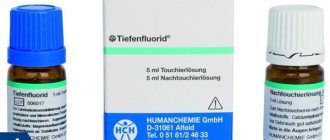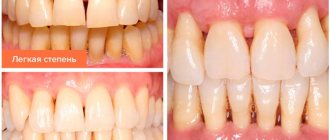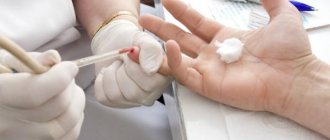Currently, medicine has come so far that diagnostic methods have become more accurate, and a variety of methods allows us to achieve an accurate diagnosis, and, therefore, the treatment prescribed by a doctor will be more effective. The medical center has its own clinical laboratory, which uses the most modern diagnostic methods. In particular, it is possible to use several methods to diagnose the presence of viruses in the human body. For example, a saliva test for viruses is the most informative and accurate.
Why is saliva taken for analysis?
Saliva is a biological fluid with important functions:
- ensuring food chewing;
- formation of a food bolus;
- swallowing function;
- oral cavity protection;
- Salivation is a process that produces lubricant.
It is a colorless liquid with a neutral alkaline reaction, which contains the following substances:
- antimicrobial components (lysozyme, secretory immunoglobulin A);
- digestive enzymes (ptialin, lingual lipase);
- epidermal growth factor;
- chloride, potassium, sodium and other electrolytes;
- amino acids, glucose, lactic acid, vitamins K, C, B1, H.
That is, the composition of saliva completely reflects the structure of blood plasma.
Saliva analysis
Author
Kauter Olga Leonidovna
Leading doctor
Therapist
until January 31
You get 10% cashback when purchasing a gift certificate More details All promotions
Saliva plays an important role in maintaining the health of the soft and hard tissues of the oral cavity. The functions of saliva include maintaining a neutral pH in the mouth, cleaning and remineralizing teeth, facilitating swallowing and digestion, and protecting oral tissues from drying out and invading microorganisms. Adequate saliva is essential to maintain oral health, and decreased secretion can contribute to problems such as tooth decay, mucositis, oral fungal infections, and periodontal disease.
Saliva has great potential as a diagnostic fluid. It can be used as a biological material for monitoring the general condition of the body, early diagnosis of diseases, and monitoring the progress of treatment. The main advantage of using saliva for these purposes is the simplicity and non-invasiveness of collection. The need to donate blood can sometimes be a psychological problem, since not everyone tolerates this manipulation well and much depends on the skill of the nurse. In the case of saliva, no such psychological threshold arises. Other advantages: smaller aliquots of the sample are needed for saliva analysis, the collected material is easy to store and transport, and saliva test results correlate well with blood counts.
What we call saliva is a mixture of secretions of the major and minor salivary glands, secretions of the mucous membrane, gingival fissure fluid, serum and blood derivatives from oral wounds, desquamated epithelial cells, expectorated bronchial and nasal secretions, bacteria and bacterial products, viruses and fungi, other cellular components and food debris. It is a complex fluid containing a full range of hormones, proteins, enzymes, antibodies, antimicrobial components and cytokines. These components penetrate into saliva from the blood, which is why in many cases it is possible to use salivary biomarkers instead of blood biomarkers.
Saliva is primarily used in the diagnosis of systemic diseases. Modern technologies have enabled the identification of a large number of medically valuable salivary biomarkers for a variety of disease conditions, including cancer, autoimmune, viral, bacterial, cardiovascular, and metabolic diseases. Saliva is actively used as a biomaterial for PCR diagnostics of infections, as well as for assessing the concentration of various hormones.
Sign up for diagnostics Do not self-medicate. Contact our specialists who will correctly diagnose and prescribe treatment.
How reliable is saliva testing?
DNA is contained in any nuclear cell, that is, in the cells of the skin, hair, mucous membranes, nails, and blood. The analysis requires a minimum amount of material - literally 1 hair, a blood stain.
Saliva is a secretion product of the salivary glands, containing enzymes, proteins, trace elements, etc. However, the liquid contains epithelial cells from the gums, tongue, and palate. This is enough to get results with an accuracy of 99.9999%.
To perform a DNA analysis of saliva, even traces of it, for example, on a cigarette butt or cup, are enough.
Diagnosis of saliva as a way to prevent caries
A saliva test shows your individual risk of caries. Through saliva diagnostics, almost every person can be individually identified to have a different risk of caries, even before tooth damage occurs. Just like in a blood test, when your doctor, among other things, determines the blood sugar level or fat level, and, based on this, prescribes his therapy for you, modern science has today developed a diagnostic procedure for dentistry: saliva analysis. With its help, you can accurately determine and control your individual risk of caries. Bacteriological tests of saliva determine the number of caries-causing microorganisms - bacteria Strepxococcus mutants and lactobacilli - per milliliter of saliva. PH is an indicator of saliva. The degree of acidity of a liquid is determined by the pH value. Average saliva value, i.e. Scientists estimate its “neutral” value at 6.4. It is constantly changing and is especially affected by nutrition and plaque activity on the teeth. If the degree of acidity decreases, for example from sweets, below a critical value of 5.6, then the saliva is overacidified. With this overacidification, the risk of tooth decay also increases, since the natural “buffering effect” of saliva has decreased. Accurate analysis takes time. A specially designed test strip takes the required amount of saliva from your mouth and transfers it to a nutrient soil. In a special environment, lactobacilli and Strepxococcus mutans multiply within two weeks. In a subsequent microbacteriological analysis, the concentration of bacteria in the saliva is read and compared using a table per milliliter of saliva. The number of lactobacilli determines the diet and consumption of processed carbohydrates (eg sugar). The number of Strepxococcus mutans determines the individual risk of caries. Prevention of caries will be more successful. The results of saliva tests provide an individual, targeted and therefore effective reduction of your personal risk of caries. To achieve this goal, dental, professional consultations and dental activities are necessary in order to:
— Maintaining proper nutrition
— Oral hygiene Strengthening enamel with fluorides
— Protection against caries by sealing fissures
— Professional training program.
For individual prevention, i.e. To prevent dental and periodontal diseases, you need a concept adapted to your risk of disease. We develop a professional training program based on your situation. Regular monitoring and repetition of saliva analysis will allow you to draw conclusions about the success of measures to improve and maintain the health of your teeth. Tooth decay is a disease that is almost always a person's own fault and can be prevented. So give your teeth the care and attention they deserve. After all, they have to work hard every day. They must bite, chew, withstand enormous pressure, help you when talking and, in addition, look good.
Articles: ← previous | next → Return to list of articles ↑
Indications for saliva testing for free hormones
- With age-related changes in hormonal status.
- Presence of symptoms of premenstrual syndrome in women.
- Changes in hormonal levels in pre- and postmenopausal states for the correct prescription of replacement therapy drugs.
- If necessary, control after completion of hormone replacement therapy.
- Persons of both sexes with symptoms of hormonal imbalance.
In addition, potential users may be people with the following symptoms: chronic fatigue, insomnia, decreased immunity, obesity/overweight, high blood sugar, sexual dysfunction, getting up at night to go to the toilet.
Before taking the test, it is not recommended to eat or drink drinks for an hour. For 10 minutes, rinse your mouth with clean water. You should refrain from taking hormonal medications for 48 hours before taking the test. To assess the effectiveness of therapy, drugs should not be discontinued.
What can you find out during the examination?
The highest accuracy of DNA tests allows their results to be used not only for scientific work, but also to establish the truth in controversial issues:
- the study reveals all genetic pathologies and susceptibility to certain diseases, such as diabetes, hepatitis;
- Genetic analysis of saliva establishes relationship with more than 99% accuracy. DNA testing determines both paternity and maternity;
- This is how a close relationship is established when the surnames coincide, for example;
- nationality analysis allows you to determine ethnic group and genealogical origin. It is known that representatives of different nationalities are susceptible to certain diseases to varying degrees. The test result allows you to adjust your lifestyle in order to avoid them;
- in this way, the patient’s addiction to drugs or alcohol is diagnosed, and intolerance to certain medications and products is determined;
- Most often, genetic analysis of saliva is used for personal identification. In forensic science, DNA testing began to be used immediately after the discovery of Dr. Alec Jeffries. The study of any biomaterial from a crime scene - blood stains, skin particles on upholstery, saliva on a cigarette filter - allows you to accurately determine whether a particular person was at the crime scene.
DNA profiling, although not a full-fledged study of the genome, provides a huge amount of information. Using the test results, individual diets are drawn up, rehabilitation methods and treatment regimens are developed, and the cause of infertility is determined.
Ways to Reduce Oral Germs
- Carry out oral hygiene procedures regularly and thoroughly.
- If necessary, the patient is prescribed a medication that can increase or decrease acidity levels. In addition, with the help of certain medications, the natural microflora of the oral cavity is restored. The drug helps eliminate harmful bacteria, which have the property of rapidly multiplying and spreading to vital organs and systems of the human body.
- Normalize nutrition. Acidity in the mouth can change if there are insufficient amounts of vitamins and minerals in the body.
To prevent the development of dental disease, it is necessary to regularly monitor the condition of the entire oral cavity.
Expert of the article you are reading:
The hormone of vigor and stress: how to properly test saliva for cortisol
Cortisol is commonly associated with stress and a number of negative consequences. However, in fact, it is what ensures awakening and vigor, promotes motivation and efficiency, maintains the “right” level of blood pressure and “sugar”, and also “slows down” the immune system from triggering allergic, autoimmune and other distorted reactions. But the direction of the effects of cortisol is determined by the level of its “dose” in the blood. And the bias, both towards “+” and “-”, obviously does not bode well.
Circadian rhythms
As you know, most hormones in the body have a more or less definite daily rhythm of release.
Cortisol, in this sense, is one of the most time-sensitive hormones, and its “work schedule” looks something like this:
- At about 4-5 o'clock in the morning, cortisol begins to pulse into the blood to prepare the body for awakening, which is manifested by an increase in blood pressure, pulse, and a decrease in blood clotting. And that is why the highest incidence of heart attacks and strokes occurs in the early morning hours;
- at 6-8 o’clock in the morning the hormone level reaches a maximum, which can shift by 1-2 hours both towards “-” and “+” - for “larks” and “night owls”, respectively;
- from 8-9 to approximately 12 noon - the cortisol concentration is slightly lower than the maximum in the morning, but is sufficient to maintain vigor and activity;
- and in the period from 12 to 15 days - the level of the hormone begins to decline inexorably,
- True, by about 15-16 hours, adjusted for “larks” and “night owls”, some may feel the so-called “second wind”, usually lasting no more than 1-2 hours and not reaching the morning level in hormone concentration;
- and then cortisol finally “declines”;
- and around 22-24 hours at night - reaches its minimum daily value and remains this way until 4-5 in the morning, when it begins to increase again and the daily cycle repeats.
Why not the norm?
Based on the above, it is obvious that it is advisable to take tests for cortisol (and in particular, saliva) several times a day, or at least in the early morning and evening (7.9.A1).
An increase in cortisol concentrations in the morning may indicate getting up too early (which is “regarded” by the body as stress), working night shifts, or a “banal” lack of sleep. It is also typical for pathology of the adrenal glands (Itsenko-Cushing’s disease), some diseases of the pituitary gland (since it “sets” the level of cortisol), as well as hyperfunction of the thyroid gland.
Exceeding standard concentrations in the evening is associated with obesity and other disorders of fat and carbohydrate metabolism, as well as with the above diseases.
And a lack of cortisol both in the morning and evening hours can be a consequence of Addison's disease, adrenal hyperplasia, some pathologies of the pituitary gland and a lack of thyroid hormones and requires a visit to an endocrinologist.










